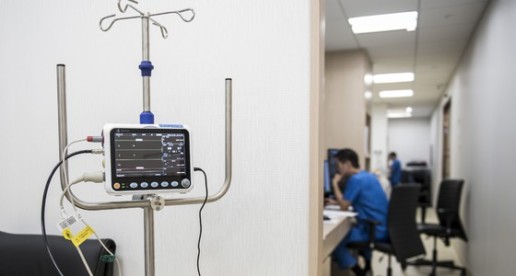Five frequently overlooked mistakes in HIPAA compliance
HIPAA regulations can be confusing and often healthcare entities overlook certain HIPAA regulations. Read this blog post to learn about the 5 most frequent tripwires.
HIPAA was enacted in 1996. In the years since, most healthcare entities have adapted to the major requirements imposed by HIPAA, HITECH and the Privacy and Security Rules. Nevertheless, the thicket of regulations still leaves some traps for the unwary. Here are the most frequent tripwires.
First, the goal of HIPAA is integrity and availability of records along with confidentiality. For workflow or other reasons, hospitals or other covered entities are often reluctant to share patient records.
With the exception of certain specific carve outs, such as psychotherapy notes, this violates HIPAA. Patients are entitled to their records. Compliance programs must accommodate this legal reality
Second, HIPAA requires that disclosure of healthcare records be minimized to the extent necessary to accomplish the objective. In other words, a contractor or other entity with access to personal health information is only entitled to those data points necessary to perform their function e.g. names and addresses.
For practical purposes, a technical solution is not always available — a covered entity may have a single computer system, and cannot realistically reconfigure it for every purpose.
Also see:
In such instances however, compliance may not be left by the wayside. It must be accomplished by alternative means such as administrative safeguards. For example, a covered entity and business associate may contractually agree to limit access, and combine this restriction with random audits to ensure compliance.
Third, the requirement of minimal disclosure also extends to individual employees and contractors. They are entitled only to those records they need to perform their job functions.
Of course, in the real world those functions continually evolve. Employees often switch roles, go on leave, rotate to different units or complete the tasks that entitled them to access in the first place.
Yet access is rarely calibrated to fluctuating business needs. Excessive access is a regulatory risk. Any compliance program needs to regularly reassess employee access. It must adjust PHI access rights to conform to current responsibilities.
Fourth, HITECH and the Security Rule require a security assessment and the institution of safeguards to protect against reasonably anticipated disclosure. They also require that all business associates be bound to adhere to the safeguards program.
The Business Associate Agreement needs to specifically incorporate this requirement. Technically, the failure to do so, even in the absence of a breach, is a violation. Yet many covered entities overlook this requirement.
If the business associate is unwilling to accommodate the requirement, the covered entity needs to evaluate the contractual arrangement, ensure that it meets the identified security criteria, and document the basis for this determination.
Finally, the healthcare sector is consolidating. The acquisition and consolidation of practices results in transition periods where the successor entity has multiple sets of PHI records under multiple compliance regimes.
The result is a program that is either incomplete, incompatible, or is otherwise deficient. This is a serious regulatory risk. While a seamless transition may not be possible, incorporating compliance into the succession plan at the earliest possible stage is the prudent approach.
None of these five steps require mastery of particularly arcane aspects of the HIPAA regulatory scheme. Yet covered entities and business associates regularly stumble on them. Each of these pitfalls is easily remedied. In compliance, as in medicine, an ounce of prevention is worth a pound of cure.
SOURCE: Gul, S (2 August 2018) "Five frequently overlooked mistakes in HIPAA compliance" (Web Blog Post). Retrieved from https://www.employeebenefitadviser.com/opinion/five-frequently-overlooked-mistakes-in-hipaa-compliance
Retirement ABCs: How employers can help baby boomers prepare
More than half of baby boomers are working past traditional retirement age for a variety of different reasons. Continue reading to learn how employers can help employees prepare for retirement.
Seventy-four million: That’s the estimated number of baby boomers, according to the U.S. Census Bureau. And 66% of baby boomers are working past traditional retirement ages for a variety of reasons. Some feel they can’t afford to retire, particularly with the looming high costs of healthcare; others may choose to work longer to keep their brains active or because they fear the adjustment to a less structured lifestyle.
Older workers approaching full retirement age (which varies, depending on when they were born) where they can begin receiving 100% of Social Security, face some daunting decisions about Medicare, Social Security and retirement plans such as health savings accounts and 401(k)s — unchartered territory until this point in their lives. There are specific rules about contributions and withdrawals in retirement, and employers should help with the education process. Here are three ways to do so.
Break down the HSA rules from a retiree perspective. If you offer HSAs to your employees, it’s important they understand how HSAs work with Medicare: The IRS dictates that a person can’t contribute to an HSA if they’re enrolled in part of Medicare (Part A, Part D, etc.) However, they can draw on funds already in the account to pay for qualified medical expenses and premiums for Medicare Parts B, C and D (but generally not Medicare supplement plans or Medigap insurance premiums).
Importantly, your employees may be penalized for delaying Medicare, depending on the number of employees you have and whether you have group health insurance. These requirements may not be well known by your employees and should be communicated clearly.
Of course, because Medicare, Social Security and any retirement plans involve several layers of government rules and financial regulations, there are some tricky issues your employees need to know about. One is retirement “back pay.”
When employees sign up for Social Security at least six months beyond the full retirement age, they’ll receive six months of retirement benefit back pay. This is problematic if your employees contributed to their HSAs over the previous six months — they are liable for tax penalties on HSAs. Create an education strategy that includes this information for employees looking to retire, so that they can stop contributing to their HSA six months before retirement and avoid costly mistakes.
Help employees understand how all their benefits work together. Your employees have contributed their knowledge and skills to you; it’s important to help them understand their options as they work toward retirement. For those just a few years out from retirement, your education plan may include helping employees understand eligibility requirements for both Social Security and Medicare, as well as any penalties that might arise from applying late to Medicare.
As your employees age, they are also eligible to contribute “catch-up” funds to HSAs, IRAs and 401(k)s in preparation for retirement. Your 401(k) partners and financial wellness resources can help employees assess their financial situations and prepare for retirement. For example, it’s a good idea to encourage employees who may have multiple 401(k) plans to consolidate them into one — this will make it easier to manage when they retire. They may ultimately roll these into an IRA to access additional investment options.
Maintain a focus on wellness. If you have a wellness program in place, take measures to boost participation and steer employees, especially older participants, toward healthy habits to help them live well and be productive leading up to retirement.
Wellness may extend outside of physical, emotional and mental wellness to professional development. Help them improve their retirement outlook by keeping job skills up to date so they are better prepared if they need to take on other employment to supplement their retirement.
For anyone nearing retirement age it’s a good idea to become acquainted with “Medicare and You,” the government’s official Medicare handbook. While each employee’s situation will differ, there’s no doubt that planning and education are key to a successful retirement strategy and, as an employer, you can support these efforts.
SOURCE: Metzger, L (14 August 2018) "Retirement ABCs: How employers can help baby boomers prepare" (Web Blog Post). Retrieved from https://www.benefitnews.com/opinion/how-to-best-educate-baby-boomer-workers-on-retirement
New rule pushes for hospital price transparency
The Centers for Medicare & Medicaid Services is pushing for a new rule that will force hospitals to provide patients with a list of the cost of all their charges. Continue reading to learn more.
The Centers for Medicare & Medicaid Services announced a proposed rule aimed at providing patients with a clear price listing of the cost of their hospital charges. In an effort to fulfill the proposed rule’s objective, CMS suggested an amendment to the requirements previously established by Section 2718(e) of the Affordable Care Act.
CMS issued the final rule (CMS-1694-F), which included the suggested amendment discussed in the April 24, 2018 proposed rule. Currently, under Section 2718(e), hospitals are given the option to either (i) make public a list of the hospital’s standard charges or (ii) implement policies for allowing the public to view a list of the hospital’s standard charges in response to an individual request.
Beginning January 1, 2019, however, hospitals will be required to make available a list of their current standard charges via the Internet in a machine readable format and to update this information at least annually, or more often as appropriate.
This could be in the form of the chargemaster itself of another form of the hospital’s choice, as long as the information is in machine readable format. CMS believes that this update will further promote price transparency by improving public accessibility of hospital charge information.
In the final rule, CMS explains that it is aware of the challenges that continue to exist because the chargemaster data may not accurately reflect what any given individual is likely to pay for a particular service or visit.
Additionally, the comments received in response to the proposed rule argue that the chargemaster data would not be useful to patients because it is confusing as to the amount of the actual out-of-pocket costs imposed on a particular patient.
CMS further explains that it is currently reviewing the concerns addressed in the comments, and is considering ways to further improve the accessibility and usability of the information disclosed by the hospitals.
SOURCE: Goldman, M; Grushkin, J; Fierro, C (16 August 2018) "New rule pushes for hospital price transparency" (Web Blog Post). Retrieved by https://www.employeebenefitadviser.com/opinion/cms-rule-pushes-for-hospital-price-transparency
How employers can manage the skyrocketing cost of specialty drugs
The number of specialty drugs continues to grow. At the end of 2016, there were 700 specialty drugs in development, compared to the 10 that were in development in 1990. Continue reading to learn more.
In the past two decades, the number of specialty medications — which treat rare and complex diseases such as multiple sclerosis, pulmonary arterial hypertension, hepatitis C, HIV, cystic fibrosis, some types of cancer and hemophilia — has grown exponentially. In 1990, there were only 10 specialty drugs on the market. By 2015, that number had increased to 300 medications, and by the end of 2016 there were approximately 700 more specialty drugs in development.
These medications are usually very high cost, with some new biologic medications costing more than $750,000 a year. Why are the costs so high? There are a number of factors, including the facts that distribution networks are limited, these medications are complicated to develop and distribute, and there are few, if any, generic alternatives for these drugs.
See also: 6 ways to mitigate specialty drug costs
The Pew Charitable Trusts found that although only 1% to 2% of Americans use specialty medications, they account for approximately 38% of total drug spending in the U.S.
So, how can employers better gain control over the cost of specialty medications? Because there are hundreds of specialty medications, there’s no single strategy for cost management that can be applied universally. To build an effective cost management strategy, employers need to first analyze employee use of specialty medications. The best strategy will approach specialty medication management by disease class and drug by drug.
However, there are key building blocks of a strategy that will both manage costs and ensure that employees have access to the medications they need. Here are six things employers can do.
Assess benefit plan design structure. Employers should consider how they are incenting employees to spend their benefit dollars appropriately and wisely. A multi-tiered medication formulary where employees pay less out of pocket for generic drugs and lower cost medications and more for costly medications is one approach that’s proven effective. To help employees afford these higher out-of-pocket costs, employers can promote manufacturer copay savings programs, which many drug makers offer.
Think about utilization management. This can include requiring prior authorization for high-cost specialty medications and step therapies (employees must start with lower cost therapies and can move up to more costly ones if those are not effective).
Consider a custom pharmacy network design. By narrowing the network of pharmacies that fill specialty medication prescriptions, employers can negotiate a better unit price. A freestanding specialty pharmacy or a pharmacy benefits manager can provide savings by optimizing discounts for both employers and employees.
Offer second opinion and other support services for rare and complex diseases. A newly diagnosed rare or complex disease patient will see, on average, seven different specialists over the course of eight years before getting a true diagnosis and appropriate treatment path. These programs aim to reduce that burden and ensure success with that treatment once it’s identified. A second opinion from a top specialist in the field provides an expert assessment of the diagnosis and recommendations on the most effective treatment protocol. This not only helps manage costs, it lowers the risk of misdiagnosis and inappropriate treatment. Additional case management services can include one-to-one counseling and, when the drug regimen requires, in-home nursing services to help patients better manage their disease and improve outcomes.
See also: How employers can increase employee use of second opinions
Offer site of care choices. Where specialty drugs are administered can have a significant impact on what they cost. Medications administered in an outpatient clinic at a hospital can cost five times as much as those that are injected or infused in a physician’s office or at the patient’s home. Offering services such as home infusion or injection delivered by nurses or incenting patients with lower copays when they receive their medications at their physician’s office can lower overall specialty drug costs.
Educate employees. When an employee or covered family member is diagnosed with a rare or complex condition that will require a higher level of care and the use of specialty medications, employers can connect employees with case managers or similar services that provide education about the condition and the medication, such as how to manage side effects or what alternative medications are available, which can increase employee adherence with the medication regimen.
SOURCE: Varn, M (8 August 2018) "How employers can manage the skyrocketing cost of specialty drugs" (Web Blog Post). Retrieved from https://www.benefitnews.com/opinion/specialty-pharmaceuticals-and-how-employers-can-manage-cost
OSHA Proposes Change to Electronic Record-Keeping Rule
On July 30, OSHA submitted a Notice of Proposed Rulemaking that would eliminate the requirement for worksites with 250 or more employees to electronically submit certain data. Continue reading to learn more.
Worksites with 250 or more employees would not be required to electronically submit certain data to the Occupational Safety and Health Administration (OSHA) under a proposal to roll back an Obama-era rule.
The Improve Tracking of Workplace Injuries and Illnesses rule requires employers that are covered by OSHA's record-keeping regulations to electronically submit certain reports to the federal government. Certain establishments with 20-249 employees are required to submit only OSHA Form 300A each year—300A is a summary of workplace injuries and illnesses that many employers are required to post in the workplace from Feb. 1 until April 30 of each year.
In addition to Form 300A, larger establishments (those with 250 or more employees) were supposed to begin submitting data from Form 300 (the injury and illness log) and Form 301 (incident reports for each injury or illness) in July. However, in May, OSHA announced that it would not be accepting that information in light of anticipated changes to the rule.
As expected, on July 30, OSHA issued a Notice of Proposed Rulemaking (NPRM) to eliminate the requirement for large establishments to electronically submit information from Forms 300 and 301.
"OSHA has provisionally determined that electronic submission of Forms 300 and 301 adds uncertain enforcement benefits, while significantly increasing the risk to worker privacy, considering that those forms, if collected by OSHA, could be found disclosable" under the Freedom of Information Act, the agency said.
The electronic record-keeping rule has faced considerable opposition from the business community, in part because some of the data submitted will be made available to the public.
The proposed rule would also require employers to submit their employer identification numbers (EINs) when e-filing Form 300A. "Collecting EINs would increase the likelihood that the Bureau of Labor Statistics would be able to match data collected by OSHA under the electronic reporting requirements to data collected by BLS for the Survey of Occupational Injury and Illness," the agency said.
Anti-Retaliation Rules Remain
OSHA's electronic record-keeping rule also contains controversial anti-retaliation provisions. These provisions, which went into effect in December 2016, give OSHA broad discretion to cite employers for having policies or practices that could discourage employees from reporting workplace injuries and illnesses. For example, the provisions place limitations on safety incentive programs and drug-testing policies. OSHA has said that employers should limit post-accident drug tests to situations where drug use likely contributed to the incident and for which a drug test can accurately show impairment caused by drug use.
Prior to the new rules, many employers administered post-accident drug tests to all workers who were involved in an incident. The anti-retaliation provisions create another layer of ambiguity for employers, because they have to justify why they tested one person and not another, which may lead to race, gender and other discrimination claims, said Mark Kittaka, an attorney with Barnes & Thornburg in Fort Wayne, Ind., and Columbus, Ohio.
OSHA has not announced any plans to revise the electronic record-keeping rule any further. Many employer-side stakeholders were disappointed that OSHA made no effort to revise the anti-retaliation provisions, said John Martin, an attorney with Ogletree Deakins in Washington, D.C.
There are still undecided lawsuits in federal courts that challenged these provisions back when they were first issued but have been put on hold while revisions were pending, Martin noted. OSHA's proposed revision clearly did not resolve all of the challengers' concerns, so they are now deciding whether to ask the courts to resume litigation, he said.
What Now?
Employers should keep in mind that OSHA's electronic record-keeping rule refers to "establishment" size, not overall employer size, Kittaka said. An establishment is a single physical location where business is conducted or where services or industrial operations are performed, according to OSHA.
Large employers still need to electronically submit 300A summaries for each work establishment—office, plant, facility, yard, etc.—with 250 or more employees, Martin said. If they have work establishments with 20-249 employees and they are covered by OSHA's high-hazard establishment list, then they must also submit 300A summaries for those smaller establishments.
The proposed rule is open for public comment until Sept. 28. "OSHA made clear in the proposed rule that the agency was only seeking comments on the electronic submission and EIN" proposals, said Tressi Cordaro, an attorney with Jackson Lewis in Washington, D.C.
SOURCE: Nagele-Piazza, L (14 August 2018) "OSHA Proposes Change to Electronic Record-Keeping Rule" (Web Blog Post). Retrieved from https://www.shrm.org/resourcesandtools/legal-and-compliance/employment-law/pages/osha-proposes-change-to-electronic-record-keeping-rule.aspx/
LinkedIn voice messaging aims to connect HR with job seekers
HR professionals are often looking for more active ways to correspond with potential hires. Continue reading to learn about LinkedIn’s new voice messaging service.
Connecting with job applicants has become more complex and interactive since the days when a single telephone number and e-mail address were displayed at the top of a candidate’s paper resume. HR professionals are continually looking for more active ways to communicate with potential hires.
Now they have another tool to allow them to connect.
LinkedIn announced last week it is rolling out a free messaging service to its 562 million users. The service allows job seekers and HR pros to dictate and send voice messages via the LinkedIn mobile app and receive them via the app or the web.
LinkedIn Messaging users can record and send a voice message up to one minute in length and review the message before hitting the send button.
“People speak about four times faster than they type, making voice messaging great for explaining longer or more complex ideas without the time and involvement of typing and editing a message,” according to LinkedIn. “It’s also helpful for when you’re on the move and don’t have time to stop and type.”
The LinkedIn feature can help HR managers determine if a job candidate is truly interested in the position that is waiting to be filled, according to Kimberly Schneiderman, senior practice development manager for RiseSmart, an outplacement services provider with headquarters in San Jose, California.
“People like to hear tone of voice and their energy from both the job seeker and job candidate side,” she says. “HR wants to hear that the candidate is interested and is eloquent — and oftentimes that comes through verbally,” she says.
LinkedIn agrees, saying that “it’s easier for your tone and personality to come through, which can sometimes get lost in translation in written communications.”
See also: Smiley faces and thumbs up? Texting, emojis enter the job interview
With unemployment at a record low in the U.S., employment experts agree that this is a job seeker’s market. Using social media for job hunting is now the norm. According to business consultant and author Peter Economy, 79% of job seekers use social media in their job search, and this number jumps to 86% for younger job hunters. He adds that 45% of job seekers use their mobile devices to search for a job at least once a day.
But not all new gadgets take hold in the HR world, warns Schneiderman, who says she has seen innovations like video resumes that were proposed in the 1990s fizzle out. “Now we see video interviews,” she says.
“Any tool can be useful so long as people use it,” she says. “We see an ebb and flow with these new tools and some stick and some don’t.”
LinkedIn’s voice messaging feature is available on its app on the iOS and Android platforms. It will be available globally to all members in the late summer.
SOURCE: Albinus, P (9 August 2018) "LinkedIn voice messaging aims to connect HR with job seekers" (Web Blog Post). Retrieved from https://www.benefitnews.com/news/linkedin-voice-messaging-technology-connects-hr-job-seekers?tag=0000015f-0970-de2a-a7df-8f7ee7d20000
Bringing personal services to work
Onsite employee benefits and personal services are now within reach of many employers. Read this blog post to learn more about onsite employee benefits.
Onsite employee benefits that go beyond big-ticket items like health clinics, gyms and child care centers are now within the reach of many employers.
When Cassandra Lammers, vice president of total rewards at Audible Inc., a publisher of audio books in Newark, N.J., wanted to encourage employees to schedule regular dental visits, she focused on the large percentage of the firm's employees who are part of the Millennial generation. These younger workers tended not to use their dental benefits, claims records showed.
To address the situation, Lammers began researching mobile dental services, looking for a vendor that would provide dental care onsite during the workday. That was not as easy as it sounded. "Most of these services are designed to help the elderly and the disabled who are not able to get to a dentist's office," she noted.
Also see: 6 Employee Benefits Trends in 2017
After many months of looking, Lammers connected with Henry the Dentist, a mobile dental office that parks its trailer at an employer's location for a few days to provide onsite dental services. The trailer offers state-of-the-art dental services and can serve three patients at a time.
The biggest selling points for Audible were the convenience for employees and the fact that all of the dentists were in-network providers for the company's dental plan, so audible does not have to pay for the service.
"We now schedule a few days each quarter to help employees get into a normal cycle for dental visits," Lammers said. The initial visit was scheduled to last only two or three days. However, employee demand for appointments was so great that the visit lasted six full days to serve 189 employees. Lammers expects to schedule five days per quarter going forward.
"The feedback from employees has been fantastic, and they love the convenience," she said.
Alexandria Ketcheson, marketing and brand director at Henry, said that under the company's current employment model "all our dentists are full-time employees of Henry," and that "a large part of our promise to our corporate clients is that their employees will see the same medical staff during every visit."
Fill'er Up
Onsite benefit programs should be designed to save employees time and to make their lives easier. Miami-based Carnival Cruise Line offers a range of onsite benefits to accomplish just that, including dry cleaning, a coffee shop and deliveries from a flower vendor every Friday so that employees can buy fresh flowers for the weekend.
"This is all part of our effort to be an employer of choice," said Tami Blanco, the company's vice president of shoreside human resources. "We focus on providing services that employees use or need regularly. Employees want to spend their time off with family, not running errands."
Also see: Our Employee Benefits Team
One of the more popular onsite benefits is access to Neighborhood Fuel, a service that comes to Carnival Cruise employees in South Florida and fills up their gas tanks in the parking lot while they are working.
By using a smartphone app, employees can request a fill-up, leaving the gas cap door ajar on their cars. Once the fuel truck completes the fill-up, the app sends an alert with the total cost of the gas.
So far, half of Carnival Cruise's Miami-based employees have signed up to use the service, and 75 percent of those employees say it is of great value to them, Blanco said.
Beware Upselling
When an employer offers any onsite benefit to employees, it comes with an implicit endorsement of the vendor's services, so it's important for employers to proceed with caution when choosing those vendors.
Also see: The Most Desirable Employee Benefits
Carnival Cruise Line, for example, often offers new services to one group of employees as a pilot project to see if it is something the company wants to offer to all employees.
Before offering onsite dental care, Lammers not only read the reviews of the dental providers working for Henry the Dentist but also asked pointed questions about how the service ensures the safety of employees while they are walking to and from the mobile facility and while they are inside receiving treatment. "We also wanted to understand how they operate [and] how they interface with employees, ensure confidentiality, et cetera," said Lammers, who inspected the mobile dental facility personally.
Once employees begin using any onsite service, employers should check in periodically to make sure employees are happy with the service and comfortable using it. For example, if employees feel a vendor is putting pressure on them to buy more or to upgrade, that's something an employer may want to address directly with the vendor so that employees don't feel pressured.
SOURCE: Sammer, J (5 July 2018) “Bringing personal services to work” (Web Blog Post). Retrieved from https://www.shrm.org/resourcesandtools/hr-topics/benefits/pages/bringing-personal-services-to-work.aspx
The corporate asset you’ve completely overlooked — and what to do about it
Have you heard of social capital? The social capital of your employees is a huge asset to your business. Continue reading to learn more.
As an HR professional, you already know the importance of human capital in the workplace. You may have even started to see the shift of referring to human resources as human capital management. Human capital is undoubtedly important, but there’s an even more important “capital” that might not be on your radar: social capital.
Social capital can be defined very simply as the resources embedded in relationships. When you find a rockstar candidate for a position because of a recommendation from a friend, that reference is your social capital. When an employee is working on a challenging project and seeks expertise from an industry veteran he knows, that advice is his social capital. When an executive scores a meeting with a coveted customer because she used to work with someone who sits on their board, that introduction is her social capital. There is no question that the social capital of your employees can be a powerful corporate asset.
The academic literature takes this insight one step further. For example, Tom Schuller of the Organisation for Economic Co-operation and Development (OECD) differentiates between social capital that results from bonding relationships (links between people with similar characteristics within a community) and bridging relationships (links between people who are different outside a community). He poses that the right balance between these two types of relationships leads to a confident, creative and enduring community. Just replace the word “community” with “team” in the sentences above, and you’ll start seeing that our efforts to promote trust and diversity in the workplace are directly related to social capital.
What can HR professionals do to consciously cultivate social capital in the workplace? Here are a few concrete ideas that you can implement immediately.
1. Consider relationship-building aptitude during the hiring process. Employees who excel at cultivating their networks have the most potential for contributing to an organization rich in social capital resources.
Here are some simple questions you can incorporate into your interview process to assess candidates’ potential: What is your process for cultivating relationships in your network? Who is your most valued relationship as it relates to your career and why? When is the last time you reached out to someone in your network for help on an important task, and how did you do it? Start with questions like these, and then dig deeper to explore how candidates would mobilize resources within their networks to solve problems they encounter in the workplace.
2. Establish policies that reward knowledge sharing. The workplace can become competitive as employees strive to prove their excellence and climb the corporate ladder. A little competition is good, but too much can stifle productivity. Even if team members trust each other, those relationships cannot bear fruit if employees see their coworkers’ success as a threat. Reward employees for helping their coworkers achieve a successful outcome and allow employees to log hours spent helping so they don’t fear retaliation for taking time away from their own projects. Employee recognition software is a great first step toward moving your corporate culture in this direction.
See also: 5 software providers for employee recognition
3. Promote bridging relationships inside and outside the organization.Good managers cultivate a tight-knit team with high levels of trust. But sometimes those managers forget to cultivate relationships outside the team. Perhaps you’ve seen this play out in the scenario where the marketing department rolls out a new piece of software, but doesn’t think to get feedback from the IT team early on in the vetting process. If even just one person in marketing had a trusted relationship with someone in IT, their connection would likely ensure a more successful launch. Remind managers of the importance of fostering cognitive diversity with ideas from outside of the team, because diversity shouldn’t end after the hiring process.
Social capital may not be an asset on your company’s balance sheet — yet. But as an HR professional, you can ensure that your employees’ relationships are cultivated to their fullest potential. What is your organization doing to develop social capital?
SOURCE: Emerson, M (13 August 2018) "The corporate asset you’ve completely overlooked — and what to do about it" (Web Blog Post). Retrieved from https://www.benefitnews.com/opinion/the-overlooked-corporate-asset-and-what-to-do-about-it
5 signs you need to up your life insurance coverage
Your life insurance policy should change as your life changes. In this article, Steinmeyer points out five signs everyone should watch out for.
Depending on the type of life insurance policy you have, you could be covered anywhere between one year and the rest of your life, depending on if you have term or permanent life insurance. But if you’ve had a policy for a while, it might no longer be enough.
As your life changes, your insurance needs change with it. Depending on events that have happened and how your mindset has evolved since you first bought a policy, it may be a good idea to make sure you have enough coverage. Here are five signs to watch out for.
1. You’ve had a child. The cost of raising a child through age 17 is $233,610, according to 2015 data from the U.S. Department of Agriculture—and that’s not even mentioning college costs if you plan to help out.
If you’ve recently had an addition to your family, your spouse or partner may not be able to afford those costs if something were to happen to you. That’s especially the case if you’re the financial breadwinner.
2. You’ve bought a new home. Two of the top five reasons people get life insurance is to cover mortgage debt and to pay for home expenses, according to the 2018 Insurance Barometer Study by Life Happens and LIMRA.
If you have a family, the last thing you want is for them to be forced out of their home because they can’t keep up with the payments. So, if you just bought your first home or a new home with a bigger mortgage, make sure you have enough coverage to at least make the monthly payments.
3. Your income has increased dramatically. Two-thirds of people who own life insurance bought it to replace lost income if they were to pass away, according to the same Barometer Study. If you’ve recently gotten a significant raise or your income has increased steadily since you last bought insurance, check to make sure your insurance coverage is still enough to replace it.
4. Your lifestyle has changed. While income increases often come with lifestyle changes, it’s also possible to get a lifestyle upgrade after you’ve paid off debt or improved your cash flow in some other way. If you notice that you’ve been spending more per month than you were a year or two ago, your current life insurance policy may leave a gap between its coverage and your loved ones’ needs.
5. You’re thinking about your estate planning. Another top-five reason people get life insurance is to transfer wealth or leave an inheritance. As you get older, you may start thinking more about what kind of legacy you want to leave behind.
If you’ve been focused on other life insurance needs up to this point, it might be time to take another look to see if you would owe any estate taxes upon your death or what other expenses your estate might incur. You may also consider whether you want to leave any money behind for your children or a favorite charity.
If one of these things has happened to you and you’re not sure if you need to increase your coverage, use a comprehensive life insurance calculator to see how your needs have changed.
In most cases, you won’t be able to increase the coverage on your current policy. Instead, you’ll buy a new one to supplement the first. You can do this by reaching out to your insurance professional or shopping around to see if another insurer might offer you a better deal.
Whatever you do, take the time every once in a while to determine whether your life insurance coverage is still enough to take care of the people you love.
SOURCE: Steinmeyer, F. (16, July 2018) "5 signs you need to up your life insurance coverage" (Web Blog Post). Retrieved from https://www.lifehappens.org/blog/5-signs-you-need-to-up-your-life-insurance-coverage/
15 employee benefits on the rise
A number of benefits, other than employer-sponsored health insurance and retirement plans are on the rise. Read this blog post to learn more.
Employer-sponsored health insurance and retirement plans are always a vital part of the employee benefits conversation. But a number of other benefits — think wellness and perks that promote work-life balance — are becoming table stakes as employers look to attract and retain talent in a tightened labor market. Here are 15 of the employee benefits that are on the rise, according to the Society for Human Resource Management’s recently released annual benefits survey.
Health savings accounts
Paid parental leave
The availability of paid parental leave increased significantly between 2016 and 2018 for every type of parental leave, according to SHRM. Paid maternity leave increased from 26% in 2016 to 35% in 2018, and paid paternity increased from 21% to 29%. Meanwhile, adoption (20% to 28%), foster child (13% to 21%) and surrogacy (6% to 12%) leave also increased in the last two years.
A number of large employers have added or enhanced paid parental leave programs in the last year. Dollar General, TD Bank and Unum are among the companies that added parental leave benefits for employees, while IBM, TIAA and Walmart are among those that expanded their programs.
Company-organized fitness competitions/challenges
Standing desks
Standing desks are one of the fastest-growing employee benefits: The percentage of employers offering standing desks to workers increased from 20% in 2014 to 53% in 2018. In the last year alone, the benefit increased 8 percentage points.
Research indicates long hours of sitting are linked to obesity, diabetes, heart disease and cancer, so employers are looking for benefits to help combat the problem.










